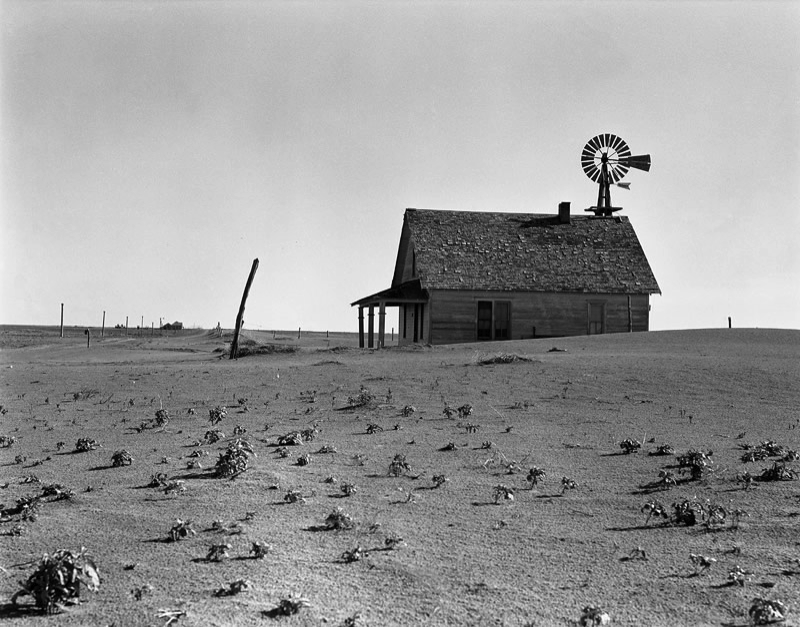another guest post from George Leopold…
It’s not the Dust Bowl of the 1930s, but the drought gripping the American Great Plains since at least 2011 has reportedly lowered water levels in southern sections of the High Plains Aquifer by many feet.
In parts of Texas and western Kansas, the New York Times reports that the great underwater reservoir, also known as the Ogallala Aquifer, no longer supports farmland irrigation, at least as it is currently practiced. Average aquifer levels in some parts of Kansas have dropped 4.25 feet since 2011, according to state statistics cited by the Times.
An incredulous Kansas agriculture official told the newspaper that some wells that were measured multiple times — out of sheer disbelief — showed a 30-foot decline.
The drought’s impact on the region has been exacerbated by wasteful, outdated agricultural practices spawned by a Cadillac Desert approach to resource management. The consequences have been magnified by the new reality of climate change.
Relearning the hard lessons of the Dust Bowl.
Aquifers are drained in decades. The time needed to recharge them is measured on a geologic time scale.
All this serves to underscore how we must change the way we use water, farm the land and why we must move away from monoculture. How many times have we seen farmers in the middle of a hot summer day irrigating endless acres of corn – among the thirstiest of crops – with a pivot sprayer? Much of the water being pulled from aquifers for irrigation is lost to evaporation. Once of the simplest alternatives is to irrigate at night.
As any gardener knows, water your plants or your vegetable patch in the evening.
Many vineyards in dry states like California (where, as a Bay Area friend says, “If it weren’t for the fog, this would be Arizona….”) have adopted “drip irrigation” techniques. The relatively inexpensive technique conserves water and irrigates roots, not foliage.
Underground irrigation is slowly catching on among some conservation-minded farmers in the nation’s breadbasket. It’s expensive, but may eventually become an unavoidable cost of doing business as aquifer and well levels continue to decline. Those costs will of course be passed along to consumers in the form of high food prices.
Only then, perhaps, will the rest of us appreciate that what is happening in the “fly-over” states affects us all.
View a slideshow highlighting the consequences of the High Plains drought and poor irrigation practices here.
– George Leopold

